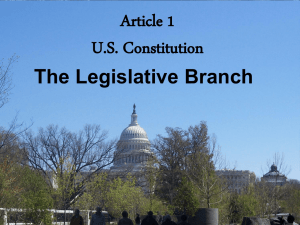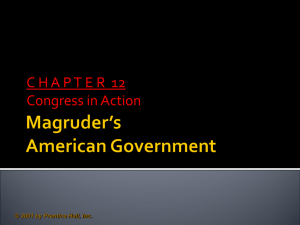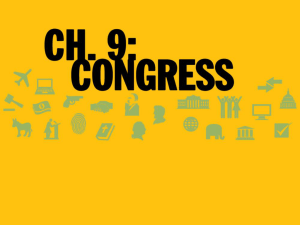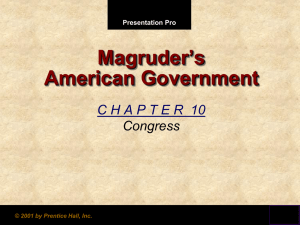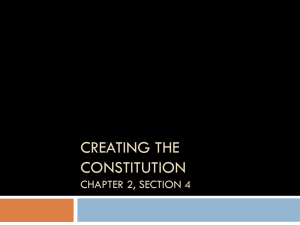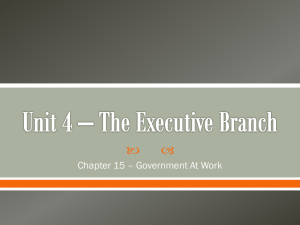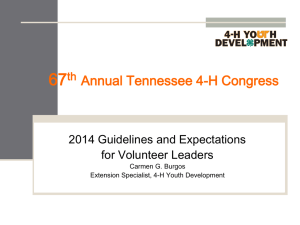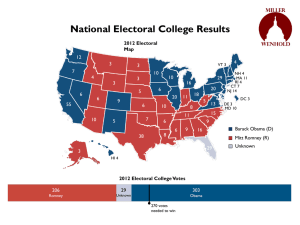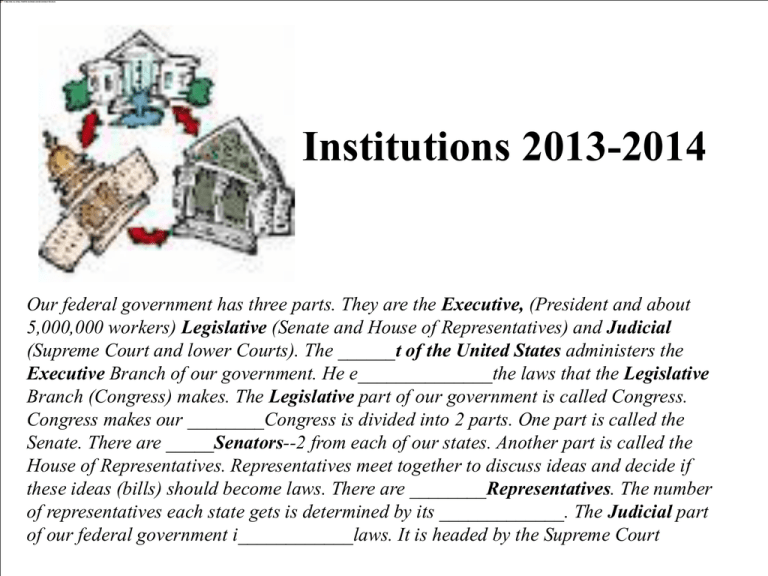
Institutions 2013-2014
Our federal government has three parts. They are the Executive, (President and about
5,000,000 workers) Legislative (Senate and House of Representatives) and Judicial
(Supreme Court and lower Courts). The ______t of the United States administers the
Executive Branch of our government. He e______________the laws that the Legislative
Branch (Congress) makes. The Legislative part of our government is called Congress.
Congress makes our ________Congress is divided into 2 parts. One part is called the
Senate. There are _____Senators--2 from each of our states. Another part is called the
House of Representatives. Representatives meet together to discuss ideas and decide if
these ideas (bills) should become laws. There are ________Representatives. The number
of representatives each state gets is determined by its _____________. The Judicial part
of our federal government i____________laws. It is headed by the Supreme Court
Remember it’s a system—lots of actors—all INTERACTING and fighting
over who has power
What’s wrong? Hint . . . Supremes who have trump power, said it violated the principle of sep of
powers and if you want to give him (could it be her?) that then you’d better do what class?
Congress . .. What’s its number one power??????
In our _______ system, this power is shared of course with state legs
It’s a complicated process
Why . . . Watch “I’m just a bill . . .”
http://www.youtube.com/watch?v=FFroMQlKiag
Family guy
http://www.youtube.com/watch?v=uf2q66G3lm
M
VOCAB for How a Bill becomes a Law
When the goal is to make national law, members must draft their
proposals as either bills or joint resolutions.
By tradition joint resolution is used
• to amend the Constitution,
• to continue funding the govt: "continuing resolutions"
• disapprove executive actions or federal agency
regulations ("disapproval resolutions").
• To approve presidential requests to use armed forces
Tonkin Gulf Resolution of 1964 (78 Stat. 384) and the
Persian Gulf Resolution of 1991 (105 Stat. 3)
• to establish commemorative days.
Like bills, joint resolutions require the President's signature, and they can be vetoed.
However, joint resolutions proposing constitutional amendments require state
ratification rather than a Presidential signature.
The Shutdown Ends
http://www.gpo.gov/fdsys/pkg/BILLS-112hjres117ih/pdf/BILLS-112hjres117ih.pdf
Contrast concurrent and simple resolutions . . .. Which don’t make law
Concurrent resolutions:
• must pass both the House and Senate to be enacted, but do not go to the President.
• used to give an opinion of the Congress, but without the force of law (so-called "sense
of Congress" language), to create a new joint committee of the Congress, to establish a
congressional budget, to authorize use of the Capitol rotunda for a ceremony, or
anything else that takes action on behalf of both chambers.
Simple resolutions
• stay within the chamber they are introduced.
• used to speak on behalf of one chamber (e.g. "Sense of the Senate" language), or seek
to create a new committee in the House, or propose to change the rules of procedure in
one chamber only.
Thousands of people passed
Sunday night by the remains
of Rosa Parks, the first
woman to be honored by
lying in the Capitol Rotunda
If they don’t make law, why use them?
• "for political persuasion and for political cover-- to get their colleagues to agree
to certain principles that they will find hard to retreat from when specific bills
come before them in the future
• to encourage the President to take a specific action (e.g. the Senate passed a
resolution expressing the sense of the Senate that the treatment of women and
girls by the Taliban in Afghanistan was unacceptable and advising the President
to take actions against Afghanistan in the U.N. General Assembly).
•to communicate the views of the people of the United States to a foreign nation
(e.g. the House has passed resolutions expressing support for dissidents in Cuba
and demanding that Cuba release political prisoners, legalize political parties
and labor unions, and schedule free elections).
•to extend congratulations or gratitude from the Congress to an individual
citizen or a group (e.g. support for our troops abroad or praise for our Olympic
athletes or appreciation for the contributions of Rosa Parks).
Examples from this Congress
http://thomas.loc.gov/home/LegislativeData.php?&n
=Browse&c=113
Look at jt resolutions, concurrent and simple
26. S.J.RES.26 : A joint resolution relating to the disapproval of the President's
exercise of authority to suspend the debt limit, as submitted under section
1002(b) of the Continuing Appropriations Act, 2014 on October 17, 2013.
Sponsor: Sen McConnell, Mitch [KY] (introduced 10/28/2013)
Cosponsors
(None)
Latest Major Action: 10/29/2013 Senate floor actions. Status: Motion to
proceed to consideration of measure rejected in Senate by Yea-Nay Vote. 45 54. Record Vote Number: 220.
House Panel Raises Furor on
Armenian Genocide
Survivors of the Armenian genocide in Turkey attended a session of a
House panel that voted to condemn the killings on Wednesday.
Call by U.S. House for Sex
Slavery Apology Angers Japan’s
Leader
August 1, 2007
By NORIMITSU ONISHI
TOKYO, Wednesday, Aug. 1 2007— Prime Minister Shinto Abe expressed some irritation on Tuesday
at the resolution approved by the House of Representatives in Washington that calls on Japan to
acknowledge its wartime sex slavery. His reaction indicated strongly that the Japanese government
would not offer surviving victims an official apology.. . .
“The resolution’s approval was regrettable,” said Mr. Abe, who caused a furor in Asia and the United
States in March by denying that the Japanese military had directly coerced women into sex slavery in
World War II.
...
On Monday, the House unanimously passed the nonbinding resolution strongly urging the
Japanese government to “formally acknowledge” and “apologize” for its military’s “coercion of
women into sexual slavery.” Japan had lobbied hard against the resolution in Washington, warning
that it could harm relations.
More vocab . . .
Rider: An amendment, usually not germane, that it' sponsor hopes to get
through more easily by including it in other legislation. Riders become laws if
the bills they are attached to are enacted. The House, unlike the Senate, has
strict germaneness rules, so riders are usually Senate devices to get legislation
enacted quickly or to bypass possible opposition
Closed Rule
A rule by the HRC (which stands for??? ) that limits or prevents amendments to a bill
placed on the Calendar.
Open Rule
Decision of the HRC to permit unlimited debate on a particular bill.
Restrictive rule:
A rule by the HRC that allows some amendments, but not others.
See why it performs a “traffic cop” function?
"Christmas tree" bill - Informal nomenclature for a bill: on the Senate floor
that attracts many, often unrelated, floor amendments. The amendments which
adorn the bill may provide special benefits to various groups or interests.
_______________ - On the
subject of the pending bill or
other business; a strict standard
of relevance.
Committees Where the real work gets done
The Gatekeepers . . . Or . . . the legislative trenches
http://www.govtrack.us/congress/committees/
Some are better for bringing home the pork . . http://www.opensecrets.org/cmteprofiles/earmarks.p
.some are more lucrative than others http://www.opensecrets.org/cmteprofiles/
General stuff about committees
Standing committees generally have legislative jurisdiction. Subcommittees
handle specific areas of the committee’s work. Select and joint committees
generally handle oversight or housekeeping responsibilities.
The chair of each committee and a majority of its members represent the
majority party. The chair primarily controls a committee’s business. Each
party assigns its own members to committees, and each committee
distributes its members among its subcommittees. The Senate places limits on
the number and types of panels any one senator may serve on and chair.
Generally, the seniority system means that the chair goes to the member who
has served the longest (on the committee) of the majority party
Each hires its own staff. The majority party
controls most committee staff and resources,
but a portion is shared with the minority.
The House Committee on Financial Services oversees the
entire financial services industry, including the securities,
insurance, banking, and housing industries
4functions of committees
(1) Making law: done by standing committees
(2) Confirmation: hold hearings to determine if they should
confirm or reject presidential nominees. Examples judiciary,
foreign relations (Senate only of course)
(3) Oversight: hearings focus on the implementation and
investigation of programs
(4) Investigation: examine allegations of wrongdoing:
Roles of Committees: (1) Making Law
Most common fate?
To pigeonhole a bill is to, figuratively, place it in a cubbyhole and leave it there - an
expression once routinely used when committees sidelined bills by refusing to report
them to the full House or Senate for final consideration. The expression is rarely used
in contemporary practice. Now, committees are said to "bottle up" a bill.
True . . . A Discharge
petition can be used
when a bill is bottled up
in committee—
but rarely is--in the
House 218 members
must sign petition; in
the Senate any
member can move to
have it discharged (or
they can add it as an
amendment to another
bill later).
House Democrats sign discharge petition
http://www.politico.com/story/2013/10/house-democrats-sign-discharge-petitiongovernment-shutdown-debt-ceiling-98219.html
Assuming a committee or subcommittee favors a measure.
It usually takes four actions.
..
First it asks relevant executive agencies for written comments on the measure
(remember the reln b/w congress and bureaucracy) .
Second, it holds hearings to gather information and views from non-committee
experts. At committee hearings, these witnesses summarize submitted statements
and then respond to questions from the senators.
http://www.youtube.com/wat
ch?v=t39uqg6e4so
http://www.youtube.com/watch?v=k1T75jBYeCs
Friday, September 24, 2010,
Third, a committee meets to perfect the measure through
amendments, and non-committee members sometimes
attempt to influence the language. These are called
“Markup” meetings.
Fourth when language is agreed upon, the, committee
sends the measure back to the full Senate, usually along
with a written report describing its purposes and provisions
It doesn’t end when it is reported out . . .
A committee’s influence extends to its
enactment of bills into law. A committee
that considers a measure will manage the
full Senate’s deliberation on it. Also, its
members will be appointed to any
conference committee created to reconcile
its version of a bill with the version passed
by the House of Representatives.
House Cuts Interest Rate for Some College
Loans
Representative George Miller, chairman of the Education and Labor
Committee, sponsored a bill on subsidized loans to college students.
Committee works is not done even when bill has been passed out
The Reln b/w
Congress, the
bureaucracy and
IGs
And more committee actions—in addition to considering bills
Role 2:
Confirmation
Clarence Thomas, whose nomination
became embroiled in sexual
harassment allegations, testified
before the Senate Judiciary Committee
on Oct. 12, 1991.
Article II, Section 2
He shall have Power, by and with the Advice and Consent
of the Senate, to make Treaties, provided two thirds of the
Senators present concur; and he shall nominate, and by and
with the Advice and Consent of the Senate, shall appoint
Ambassadors, other public Ministers and Consuls, Judges
of the supreme Court, and all other Officers of the United
States, whose Appointments are not herein otherwise
provided for, and which shall be established by Law: but
the Congress may by Law vest the Appointment of such
inferior Officers, as they think proper, in the President
alone, in the Courts of Law, or in the Heads of
Departments.
Chairman of U.S. Senate Judiciary Committee Patrick Leahy (D-VT) (R) listens as
ranking member Sen. Jeff Sessions (R-AL) (L) speaks during hearing for the Kagan
confirmation before the Senate Judiciary Committee July 20, 2010 on Capitol Hill in
Washington, DC. The committee has voted 13-6, in favor of President Obama’s nomination
of Elena Kagan to become an Associate Justice of the Supreme Court of the United States,
to replace Justice John Paul Stevens who has retired on June 29, 2010.
( July 19, 2010 - Photo by Alex Wong/Getty Images North America)
Sotomayor Confirmed by Senate, 68-31
Secretary of State-designate Hillary Rodham Clinton with Senators
Christopher J. Dodd and John Kerry before a hearing of the Senate Foreign
Relations Committee, which is considering whether to confirm her
appointment as President-elect Barack Obama's choice to be Washington's
top diplomat.
Other roles of Committees: (3) oversight Committee review of the activities of a Federal agency or program.
Attorney General Alberto R.
Gonzales, left, found skepticism
Monday from senators including
Richard J. Durbin, Democrat of
Illinois
The secretary of
state asserted that
progress was being
made but declined
to rule out widening
the war to Syria.
In three and a half hours of hearings at the Senate Foreign
Relations Committee, Ms. Rice was both conciliatory and
combative, rebutting the gloomy assessments from senators of
both parties but at the end offering a weary concession to Senator
Barack Obama, Democrat of Illinois
http://www.nytimes.com/2005/10/20/international/middleeast/20diplo.html
THE GENERAL PRINCIPLES OF CONGRESSIONAL OVERSIGHT
What is the Basis for Congressional Oversight?
Congressional oversight is one of the most important responsibilities of the United States
Congress. Congressional oversight refers to the review, monitoring, and supervision of
federal agencies, programs and policy implementation, and it provides the legislative
branch with an opportunity to inspect, examine, review and check the executive branch
and its agencies.
The authority of Congress to do oversight is derived from its implied powers in the U.S.
Constitution, various laws, and House rules. In affirming Congress' oversight powers, the
Supreme Court in McGrain v. Daugherty stated that "the power of inquiry – with process to
enforce it – is an essential and appropriate auxiliary to the legislative function." In Watkins v.
United States the Court described Congress' oversight power by stating that the "power of the
Congress to conduct investigations is inherent in the legislative process. That power is broad."
The Supreme Court also observed that "a legislative body cannot legislate wisely or
effectively in the absence of information respecting the conditions which the legislation is
intended to affect or change." The Legislative Reorganization Act of 1946 mandated that
House and Senate committees exercise "continuous watchfulness" of the administration of
laws and programs under their jurisdiction. The Legislative Reorganization Act of 1970
permitted House standing committees to "review and study, on a continuing basis, the
application, administration and execution of laws" under its jurisdiction.
Health and Human Services Secretary Kathleen
Sebelius as she was sworn in prior to the House
Energy and Commerce Committee hearing
Wednesday.
http://www.senate.gov/reference/glossary_term
/oversight.htm
October 31 2011
Secretary of State Hillary Rodham Clinton spoke to the House Foreign Affairs Committee
last week about her trip to Afghanistan and Pakistan.
The United States is relying on Pakistan’s Inter-Services Intelligence to help broker a
peace deal in Afghanistan with the same militants that the agency has been accused of
supporting
Another Role for Committees (4) :
“Investigations”
committee investigations examine allegations of wrongdoing.
Congressmen might not get the
answers they want
BBC Feb 2002
Former Enron boss Kenneth Lay will refuse to answer questions when he appears before a
Congressional hearing into the collapse of the US energy giant, his spokeswoman has said.
"Under the instruction of counsel, Mr Lay will exercise his Fifth Amendment rights," Kelly
Kimberly said.
A court, Grand Jury, legislative body, or Administrative Agency uses a _______to compel an
individual to appear before it at a specified time to give testimony. See this business:
http://www.venable.com/congressional-investigations-practices/
Sept 2012: A congressional
investigative committee on
Wednesday grilled officials
from two agencies that backed a
$535-million loan package to
failed Northern California solar
panel manufacturer Solyndra.
Republicans on the House Energy and Commerce Committee's Subcommittee on Oversight and
Investigations said they want to know why the Energy Department approved the Solyndra loans in
2009 and then restructured the loan this February despite evidence that the company was struggling
financially.
Solyndra, which was hailed by President Obama in 2010 as an innovative company that would use
stimulus money to create jobs and lead the economic recovery, laid off most of its 1,100 workers Aug. 31
and announced it would cease operations. The company filed for Chapter 11 bankruptcy Sept. 6. . . .
.
Rep. Cliff Stearns (R-Fla.), the subcommittee's chairman, pressed Energy Department loans director
Jonathan Silver on Wednesday to explain how the agency could approve more than half a billion dollars
in loans despite questions about the company's financial health.
He also cited internal emails that he said show White House officials appeared to be pressuring Energy
Department and the Office of Management and Budget to speed up approval of the Solyndra loans. "You
should have protected the taxpayers and made some forceful actions here," Stearns said.
Meat Packer Admits
Slaughter of Sick Cows
Steve Mendell, president of the Westland/Hallmark Meat
Company, testified before a House subcommittee
Wednesday.
March 13, 2008
By MATTHEW L. WALD
Meat Packer Admits Slaughter of Sick Cows
WASHINGTON — The president of a slaughterhouse at the heart of the largest meat recall
denied under oath on Wednesday, but then grudgingly admitted, that his company had apparently
introduced sick cows into the hamburger supply.
He then tried to minimize the significance.
The executive, Steve Mendell of the Westland/Hallmark Meat Company of Chino, Calif., said, “I
was shocked. I was horrified. I was sickened,” by video that showed employees kicking or using
electric prods on “downer” cattle that were too sick to walk, jabbing one in the eye with a baton
and using forklifts to push animals around.
The video was taken by an undercover investigator from the Humane Society of the United
States. One tape showed a worker using a garden hose to try to squirt water up the nose of a
downed cow, a technique that Representative Bart Stupak, a Michigan Democrat who conducted
the hearing where Mr. Mendell testified, referred to as waterboarding.
Testifying before the Oversight and Investigations Subcommittee of the House Energy and
Commerce Committee, Mr. Mendell, who appeared only after being subpoenaed, assured
lawmakers that despite his lack of knowledge about conditions at the plant, sick animals were not
slaughtered for food, so no safety issue existed.
October 29, 2009
N.F.L. Scolded Over Injuries to Its Players
N.F.L. Commissioner Roger
Goodell testified before a
Congressional committee that
was investigating head injuries
in football.
By ALAN SCHWARZ
WASHINGTON — The commissioner of the N.F.L. faced heated criticism Wednesday before the
House Judiciary Committee, with lawmakers, former players and even a former team executive
accusing the league of neglect in its handling of active and retired players with brain injuries.
With evidence mounting of a link between playing professional football and cognitive impairment
in later life, and news reports of poor medical treatment for some former players with dementia
and other signs of mental decline, the committee repeatedly challenged the commissioner, Roger
Goodell, to defend the league’s policies and research.
“The N.F.L. sort of has this blanket denial or minimizing of the fact that there may be this link,”
Representative Linda T. Sánchez, Democrat of California, said to Mr. Goodell during the daylong
hearing. “And it sort of reminds me of the tobacco companies pre-’90s when they kept saying,
‘Oh, there’s no link between smoking and damage to your health.’ ”
Another important role for a committee in the House: the Traffic Cop
__________ Committee (House
only) which governs the
procedures under which the bill
will be considered on the floor
Other Important Committees to
know:
• The Appropriations Committee (House and
Senate)
• Ways and Means Committee (House only)
• Judiciary (Senate) and Foreign Relations
(Senate)
• House and Senate Budget committee
PORK
PorkBarrel Spending :
This is the nickname given to
lawmakers' allocation of funds to
pet projects and programs, usually
without public hearings or the
review typically given to pending
legislation. Pork-barrel spending in
its classic form directs government
funds into projects that benefit a
legislator’s state or district, thus
increasing voter satisfaction and
improving his or her chances of
reelection
The term began as a political reference in the post-Civil
War era. It comes from the plantation practice of
distributing rations of salt pork to slaves from wooden
barrels.
Congressman Smith dipped into
the pork barrel in this fiscal year's
.
federal budget and pulled out. $10 million for a river dredging
project in his district. For her part, Sen. Jones ensured $3 million
was earmarked so that the university in her state could research a
blight affecting area trees.
/
Earmarks
These are the allocations of revenue in a bill that are directed to a specific project or recipient
typically in a legislator’s home state or district. (The process itself is known as “earmarking,”
and earmarks could also be called “earmarked funds.”) They are often slipped into bills
without the review typically given to pending legislation.
Parties and Congress:
What’s it mean to Control Congress?
Nancy Pelosi, the incoming House speaker, with Steny H. Hoyer at a news
conference Thursday after Democrats chose him as their new majority leader.
Ms. Pelosi had supported John P. Murtha, right. Also at the conference were
Rahm Emanuel, left, and John B. Larson Nov 17 2006
Nancy Pelosi Ousted as House Speaker,
John Boehner Waits in Wings
Nov 3, 2010
Pelosi, Highest Ranking Woman in American Politics, to Step Down from Historic Role
Republicans Capture House in Historic
Wave, Claim 'Mandate' to Shrink
Government
Rep John Boehner
Boehner Becomes the Lead Character as Roles
Are Reversed in the Capitol
Representatives John
A. Boehner, right, and
Eric Cantor on
Wednesday at the
center of new media
attention at the
Capitol.
WASHINGTON — The first sign of the new pecking order on Capitol Hill was the pack of
cameramen jammed inside Representative John A. Boehner’s suite early Wednesday morning.
As the Republican leader in a House run firmly by Democrats, Mr. Boehner had sometimes
had trouble making his voice heard.
For cool 2010 election shifts:
http://www.nytimes.com/intera
ctive/2010/11/03/us/politics/el
ection-results-houseshift.html?ref=politics
January 6, 2011: On the second day of the 112th Congress, the House of
Representatives read a modified version of the U.S. Constitution, a historic
first
http://en.wikipedia.org/wiki/112th_United_States_Congress
What’s it mean to control the Senate?
Senator Daniel K. Inouye, right, a Democrat,
will take over the defense appropriations
panel from his friend Senator Ted Stevens, a
Republican.
What’s it mean to control? . . . Committee membership
To the victor goes the spoils. The specific number of majority/minority seats on
committees are decided by the majority party leaders in each chamber after
"consultation" with the minority leaders. In actual practice, the degree of consultation is
minimal in the _________and maximum in the __________
As a general rule, the guideline in both chambers is to approximate the ratio of seats on
committees to that of majority to minority membership in the full chamber. While the
Senate adheres to this principle, the House does so for only 5 of its 20 standing
committees. Senate committees all have a ratio which reflects the number of majority to
minority members in the chamber overall. This careful adherence to fairness is
understandable in a chamber which operates so much by unanimous consent -- a
practice requiring reciprocity, collegiality, and comity among Senators.
In contrast, the House tradition of firm majority control makes for wider discrepancies in
the party ratios on House committees. For example, for many years the House Rules
Committee has had 9 majority party members to 4 minority: a ratio of better than 2 to 1.
The ratio is set to assure that the minority can never win. The Rules Committee acts
almost as an extension of the Speaker's office, and there is no pretense at partisan
balance on that committee. For other "power" committees, e.g. Ways and Means,
Appropriations, and Budget, the majority receives slightly more seats than its ratio in
the overall House. This assures the majority will stay in firm control of these important
panels.
Generally, parties in the US have
weak discipline but there are some
means by which parties control
members:
parties won’t help members
campaign (especially a big deal
when _______money was around
but even now parties help get the
word out, endorse people etc)
in congress parties can control
________and ______
assignments, access to the floor,
scheduling of your bill, they have
a whip system.
Logrolling
September 21, 2010, 5:30 pm Murkowski to Lose
Senate Committee Spot
By CARL HULSE
Senate Republicans are not happy with their colleague, Senator Lisa Murkowski, for running
as a write-in candidate in Alaska’s Senate race, and they intend to show it
Not content with Ms. Murkowski’s resignation from her
position as vice chairwoman of the Senate Republican
Conference, Republicans intend to meet on Wednesday and
vote to strip her of her position as the senior Republican on
the Energy and Natural Resources Committee.
Some Republicans were worried that Ms. Murkowski
would emphasize her influence on the committee with
control over issues important to Alaska as an issue in her
campaign against Joe Miller, the Tea Party-backed
candidate who beat her in the primary and is now the
party’s official choice.
Leadership in Congress
• At the beginning of each two-year congressional session,
members of the House of Representatives and the Senate
meet separately to organize and select their leaders. The
Republicans call their internal party organization the
"Conference" while Democrats call their party organization
the "Caucus."
• Both parties in each chamber hold organizational meetings
where their members elect their own leadership, adopt
internal rules for how their party will operate, and draft
their version of the institutional rules for either the House
or the Senate. These meetings are closed to the public and
to the press.
After Republicans dismantled the Democratic majority in the House
Tuesday night, Democrats must decide whether to re-elect Nancy Pelosi -and she must decide whether to take the role -- as the top Democrat in the
party's new minority position
http://www.foxnews.com/politics/index.html
House Republican Leadership Positions
____________ ___ _____ ________The position is established in the U.S. Constitution and is
the most senior officer of the House of Representatives (and the third most senior official in the
entire federal government.) Institutionally, the Speaker holds broad-ranging powers and
presides over debate in the House, makes rulings on points of order, has priority right of
recognition on the floor, and sets the agenda by deciding what and when legislation comes
before the House. In addition, the Speaker appoints task forces and commissions and oversees
the management of support functions to the House. Finally, by modern practice, the Speaker
serves as the primary spokesperson for his congressional party.
House __________Leader. the second most senior official in the House, is by recent practice
the day-to-day manager of business on the House floor.
House Majority________. The responsibilities includes persuading Members to support the
party's position on votes and projecting support for the party's position. They count votes
and "whip" or convince their colleagues to supporting their party's legislative position.
What’s a party whip?
Party Whips (Assistant Floor Leaders) Both parties in the Senate elect whips. The term
"whip" comes from a fox-hunting expression -- "whipper-in" -- referring to the member of
the hunting team responsible for keeping the dogs from straying from the team during a
chase. Established early in the 20th century, the development of party whips coincided with
the evolution of party leaders in the Senate.
Democrat James Hamilton Lewis of
Illinois became the first party whip in
1913, and the Republicans established
their own whip position two years later.
These assistant leaders are mainly
responsible for counting heads and
rounding up party members for votes
and quorum calls, and they
occasionally stand in for the majority
or minority leaders in their absence.
http://www.senate.gov/artandhistory/his
tory/common/briefing/Party_Whips.htm
See the names: house
: http://www.house.gov/leadership/
Senate:
http://www.senate.gov/pagelayout/senators/
a_three_sections_with_teasers/leadership.ht
m
How interlining. . . The Senate lists chairs
http://images.politico.com/global/2013/02/04/1
30204_cartoon_600_605.jpg
HOW REPRESENTATIVE IS CONGRESS AFTERALL?
87% of the Senate is Christian
(compared with 79.8% of the
population) and 13% of the
Senate is Jewish (compared with
1.4% of the population).
According to the data, no Senator
falls under the category "No
Religion/Atheist/Agnostic" - a
category embodied by 15.0% of
the U.S. population according to
the 2001 Census.
AND DOES IT MATTER?
Descriptive vs Substantive rep
Demographics of 113th
https://www.fas.org/sgp/crs/misc/R42964.pdf
Meet the 113th congress: http://media.cq.com/blog/2012/12/demographics-of-the113th-congress/
Bicameralism solves so much . . . .
• fear of excessive power concentrated in a single institution
• "inconvenience" of dominance by legislature
• Fear of mob rule by impassioned majority
• concern about basis of representation in a federal system
Also: 25/7 vs 30/9 . . . ; partisanship; revenue bills, incumbency adv, redistricting =
safe seats and narrow constituencies
Complicating matters even further: relatively equal bicameralism
February 8, 2009
Divisions Over the Competing Stimulus Bills
WASHINGTON — The Senate agreement on a roughly $827 billion economic stimulus bill
sets up tough negotiations with the House, primarily over tens of billions of dollars in aid to
states and local governments, tax provisions, and education, health and renewable energy
programs.
Congress is racing to try to finalize the legislation this week.
The price tag for the Senate plan is now only slightly more than the $820 billion cost of the
measure adopted by the House. Both plans are intended to blunt the recession with a
combination of tax cuts and government spending on public works and other programs to
create more than three million jobs.
But the competing bills now reflect substantially different approaches. The House puts
greater emphasis on helping states and localities avoid wide-scale cuts in services and
layoffs of public employees. The Senate cut $40 billion of that aid from its bill, which is
expected to be approved Tuesday.
From the BBC . . . Also a ________democracy
but they have ___equal bicameralism
Why not elect everybody at the same time?
The American system is designed to be overlapping, both in terms of the powers of
the different bodies and in terms of when people are elected to them.
The House of Representatives is the larger of the two houses of Congress. It was set up
as a p_________ body, with the number of members tied to the size of the
___________. The idea was for it to directly and quickly reflect the public mood,
which is why the members face election every _______ years.
The Senate was planned as a more r_________body - they serve for _____ years. Each
state has two senators regardless of its_________.
http://www.bbc.co.uk/news/10263956
Article I, Section 9, Clause 7 imposes accountability on Congressional spending:
The Constitution places the power of the purse in Congress: "No Money shall
be drawn from the Treasury, but in Consequence of Appropriations made by
Law . . ... , This empowerment of the legislature is
at the foundation of our constitutional order.
Congress has the "Power of the Purse." The Constitution
grants Congress the power of the purse. Under Article 1
[section 8], the Congress is given the power to tax and impose
tariffs, duties, and other measures to collect revenue for the
U.S. Treasury. It is also given the authority to borrow money
on credit on behalf of the United States. Article 1 [section 9,
clause 7] of the U.S. Constitution, states no money can be
appropriated [spent] out of the U.S. Treasury except by Act of
Congress. This means that governmental agencies and
departments may not spend any money for their operations and
programs that Congress has not appropriated nor use any
federal money for any purpose that Congress has not expressly
authorized.

